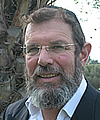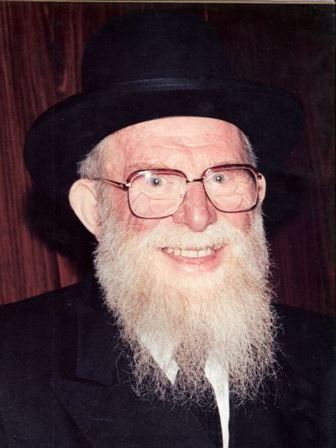אל תזיז את הבדים
הרב שאול אלעזר שנלר
Our parsha opens by teaching us about the creation of the Mishkan, the place where the Shechinah – the Divine Presence – dwells upon Israel.
Right at the beginning of the parsha we encounter a mitzvah from the Torah, the significance of which is very difficult to understand: "The poles shall be in the rings of the Ark – they shall not be removed from it."
In the Rambam's words in Sefer HaMitzvot: "And the 86th negative commandment is a warning not to remove the poles of the Ark from the rings, and these are the words of the Exalted One: 'The poles shall be in the rings of the Aron – they shall not be removed from it.' And one who transgresses this prohibition is punished by lashing."
And the question arises – why not? Why indeed do the poles, whose purpose it is to carry the Aron only when the Mishkan is in transit, have to remain in it also during periods of encampment?
Even more we have to wonder at the fact that one of the 613 commandments we merited to receive is dedicated to this directive. What is the great importance of this?
The question is magnified even more if we remember that this commandment applied not only during the era of the Mishkan when it was necessary from time to time to transport the Tabernacle from location to location, but also after the Aron reached its final destination, in Beit HaOlamim (the Temple).
Not only this, but it is described in a unique way in the depiction of the Mikdash:
"For the Cherubim spread their wings over the place of the Aron, and the Cherubim covered the Aron and its poles from above. And they extended the poles, so the ends of the poles were seen from the Kodesh, before of the Sanctuary, but they were not seen outside, and they are there to this day." (Kings 1, Ch. 8 verses 7-8)
The Gemara (Yoma 54a) explains the meaning of this verse: Even though the length of the poles did not reach the Parochet (curtain), they were miraculously extended in order to protrude slightly.
Rabbu Yehuda asked: It is written "the ends of the poles were seen" and (to the contrary) it is written "they were not seen outside." How can this be? They were seen and not seen. Additionally, the Beraitha says: "the ends of the poles were seen" – could it be that they were not moved from their place? It comes to tell us: "the poles were drawn out." Is it possible that they made holes in the Parochet and (the ends) came out? It comes to tell us: "they were not seen outside." How can this be? They pressed against the Parochet and protruded (without making holes).
In other words, the poles were miraculously lengthened in order to visibly protrude against the Parochet.
It is a fact that most of the year Am Israel could not see the Aron, but when they looked at Kodesh HaKodeshim the only thing they could discern was the protrusion of the poles of the Aron in the Parochet. What is the significance of this, and why is this so important that a miracle was required for this?
We can suggest an explanation from which we can learn Mussar and motivation for our daily conduct.
The challenge of maintaining holiness together with "real life" is a great one, and generally it is impossible to be entirely and exclusively dedicated to Kedushah and also to wholly live and act in the practical world. The best way to radiate holiness on all the years, on all aspects of life or on all the people is to allocate a small part which will be completely focused and dedicated to holiness, and this part will extend and influence all the other parts, which will be nourished and shaped by it. This is true regarding Am Israel, this is true regarding periods in one's life, and this is true even regarding each and every day of our lives.
On the other hand, taking this measure involves a great danger, as it could bring about the opposite result. One's heart could generate the feeling that by virtue of this demarcated Kedushah, "we have done our duty" toward holiness, we have already "paid our dues" as required, and the rest is our "spoils" and we can act as we wish, with no pangs of guilt over the absence of Kedushah – since the spiritual inclination which is imprinted in man has already been satisfied by that specific, demarcated holiness (see Rabbi Shimshon Rafael Hirsch's discussion on this as related to the mitzvah of the first-born in Shemot 13). This unwholesome practice is usually found in the false religions, and – lehavdil – to our sorrow there were periods when this malady spread in Am Israel, as is described at length in the words of our prophets.
The focal point of the Mishkan and the Mikdash is in Kodesh HaKodeshim, the abode of the Aron "the stone tablets, the Torah and the Mitzvah." Therefore HaShem stressed the command not to remove the poles from the Aron, and that they must always be noticeable to all who enter the Kodesh, so that the protrusions will be a sign to them that the purpose of holiness is not to remain limited and imprisoned in its dwelling, the Holy of Holies. But to the contrary, the purpose it that all who see it will receive a great dose of Kodesh, which they will take with them when they leave the Mishkan and return to the practical world. The main purpose of the Aron is not to sit in its resting place, but that you should take it and carry it everywhere you go!
Even now, when the Mikdash is not yet standing in its rightful place, the significance of this mitzvah remains as important as ever for each of us. Today as well the Torah demands of us not to leave it locked into periods of life and times of the day when we are in the Beit Midrash and the synagogue, and not to relegate it only to the men of the Yeshivot. Rather, the Torah is meant to be carried by us in all our paths, and to shape every aspect of the way we live. And maybe this is part of the meaning stressed in the prophet's words regarding the protrusion of the poles of the Ark: "and they are there to this day."
May we merit to arise and fully perform all of this, and to soon see the return of the Shechinah to Zion with mercy.
קוד השיעור: 9249
לשליחת שאלה או הארה בנוגע לשיעור:

.jpg)





 (1).jpg)